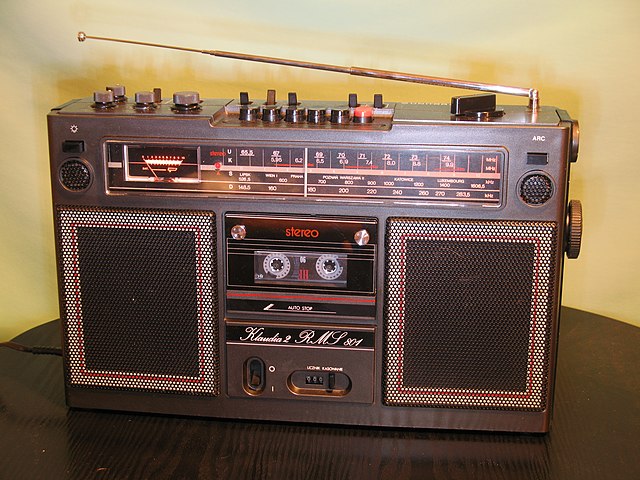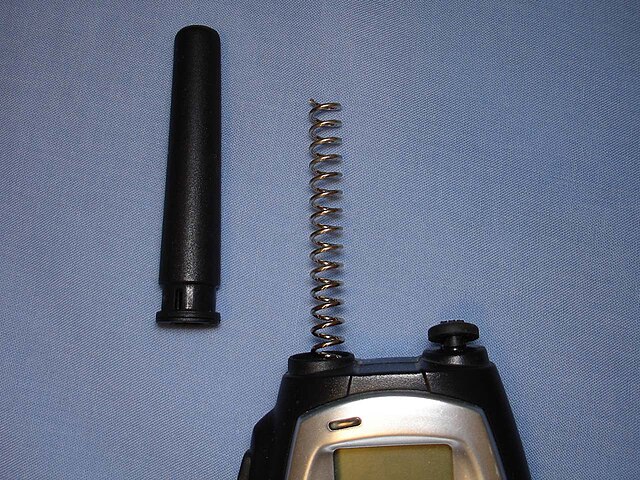In radio and telecommunications a dipole antenna or doublet
is one of the two simplest and most widely-used types of antenna; the other is the monopole. The dipole is any one of a class of antennas producing a radiation pattern approximating that of an elementary electric dipole with a radiating structure supporting a line current so energized that the current has only one node at each far end. A dipole antenna commonly consists of two identical conductive elements
such as metal wires or rods. The driving current from the transmitter is applied, or for receiving antennas the output signal to the receiver is taken, between the two halves of the antenna. Each side of the feedline to the transmitter or receiver is connected to one of the conductors. This contrasts with a monopole antenna, which consists of a single rod or conductor with one side of the feedline connected to it, and the other side connected to some type of ground. A common example of a dipole is the "rabbit ears" television antenna found on broadcast television sets. All dipoles are electrically equivalent to two monopoles mounted end-to-end and fed with opposite phases, with the ground plane between them made "virtual" by the opposing monopole.

UHF half-wave dipole
Dipole antenna used by the radar altimeter in an airplane
Cage dipole antennas in the Ukrainian UTR-2 radio telescope. The 8 m by 1.8 m diameter galvanized steel wire dipoles have a bandwidth of 8–33 MHz.
Length reduction factor for a half-wave dipole to achieve electrical resonance (purely resistive feedpoint impedance). Calculated using the induced EMF method, an approximation that breaks down at larger conductor diameters (dashed portion of graph).
In radio systems, many different antenna types are used whose properties are especially crafted for particular applications.
Most often, the greatest effect is due to the size (wavelength) of the radio waves the antenna is to intercept or produce; one competing second effect is differences in optimization for receiving and for transmitting; another competing influence is the number and bandwidth of the frequenc(y/ies) that any single antenna must intercept or emit.
"Rabbit ears" dipole variant for VHF television reception
Two-element turnstile antenna for reception of weather satellite data, 137 MHz. Has circular polarization.
Quarter-wave whip antenna on an FM radio for 88–108 MHz
Rubber ducky antenna on 446 MHz UHF walkie-talkie with rubber cover removed.








